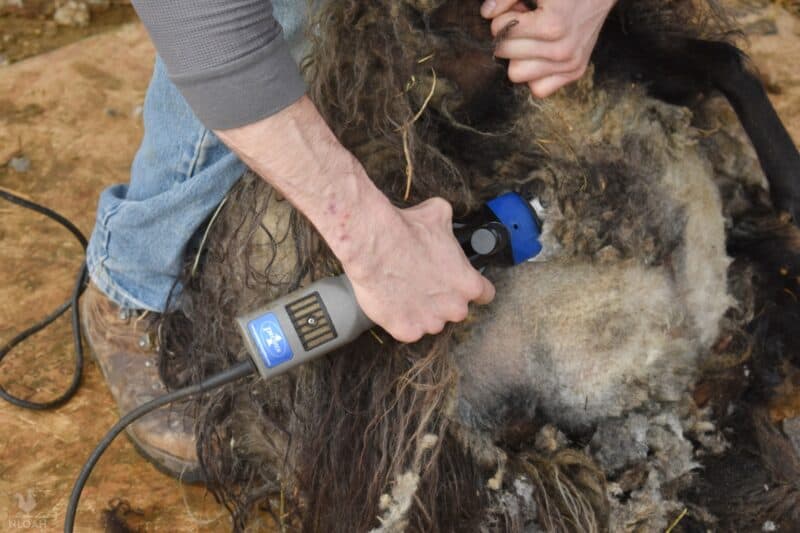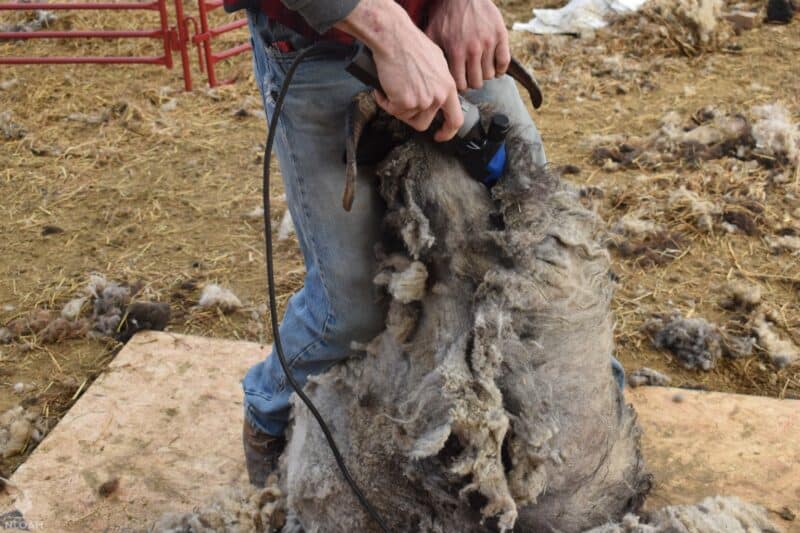If you own livestock, you already know how important it is to take care of them for their own health and well-being. And not just for that, but also to maintain productivity whatever you might be doing with them.

As it concerns renewable resources that we get from our animals, there is a growing clamor from the public and from special interest groups concerning the treatment of the animals we rely on.
Considering the shearing of sheep, some folks seem to think that the process is torturous because sheep tend to struggle and resist so much.
Others claim that the process is painless and that sheep actually like it? So, do sheep like being sheared?
No, sheep as a rule do not enjoy being sheared. Being restrained combined with the buzzing of clippers tends to stress them out a little bit and they will bleat and make noise. However, performed correctly and with care, shearing is painless and will not injure sheep.
I can understand why some people would think that sheep are being tortured when they are being sheared.
Many sheep detested and will bleat and cry like they are being killed when, just like an unruly toddler, no actual harm is being inflicted on them.
But, you still need to know what you are doing if you want the process to go smoothly and avoid actually injuring your sheep. Keep reading, and I’ll tell you everything you need to know…
Do Sheep Have to Be Sheared?
Yes, sheep have to be sheared regularly. If their wool is not removed, it will continue to grow and become heavier, which can cause several problems for the sheep.
They may suffer from heat stress in warm weather, as well as an increased risk of insect infestations, skin diseases, and other issues.
Can’t Sheep Just be Allowed to Keep Their Wool?
No, they cannot. Domesticated sheep have been bred over many generations to produce more wool than they need and also to retain that wool.
They literally do not shed; their wool just grows and grows.
If their wool is not removed, it can cause several problems, such as overheating, irritation, and even blindness if the wool covers their eyes.
In some cases, the weight of the wool can cause the sheep to fall over and be unable to get back up.
What Happens to Sheep that Are Not Sheared?
If sheep are not sheared, their wool continues to grow, and eventually, it becomes matted and entangled.
This can trap moisture, dirt, and feces against their skin, leading to skin infections and lots of other problems as detailed above.
In severe cases, the sheep may even die from the weight of their overgrown wool.
Invariably, shearing a sheep that is badly matted and neglected will be far more precarious for the shearer and also for the poor sheep so afflicted.
This is why it’s so important to make sure that you’re keeping your sheep well-groomed and sheared regularly.
Why Don’t Wild Sheep Need to Be Sheared, Then?
Wild sheep do not need to be sheared because they haven’t been selectively bred for their wool like domesticated sheep.
Their wool grows in a way that naturally sheds excess fibers, preventing it from becoming too heavy or becoming entangled.
This natural trait was bred out of domestic sheep for obvious reasons; if the animals are constantly shedding the resource that makes them valuable, that isn’t good for business!
Additionally, wild sheep often live in cooler climates where wool serves as insulation rather than causing overheating.
Like all wild animals, these wild sheep species are highly evolved and adapted to their environment.
Why Do Sheep Bleat and Struggle When Being Sheared?
Sheep typically bleat and struggle during shearing because they are simply stressed and uncomfortable.
They may be frightened by the process, the noise of the clippers, or agitated from being restrained.
Additionally, some sheep may have had negative experiences with shearing in the past, which can make them more resistant to the process in total.
But, assuming the shearer is skillful, there’s nothing to worry about: just like a toddler that throws a fit when they are the least bit upset, it is just lots of noise about nothing!

Is Shearing Painful for Sheep?
Shearing itself is not painful for sheep, but they may experience discomfort from being restrained or, sometimes, alarm from the heat of the clippers.
Cutting a sheep’s wool doesn’t cause any pain, just like cutting our hair is painless.
Do Sheep Always Need to Be Restrained for Shearing?
As a rule of thumb, yes. Sheep are typically restrained during shearing to keep them still and prevent them from moving around or injuring themselves or the person shearing them.
However, a rare sheep may be trained to stand still during shearing without the need for restraints. Quite the trick, let me tell ya!
Do Some Sheep Actually Like Shearing?
It is possible, but highly unlikely. While it is unlikely that sheep enjoy the shearing process, some may become accustomed to it and tolerate it better than others.
Additionally, after being sheared, sheep often feel peppy and happy because they are lighter and more comfortable- which could be a relief to them!
How is Shearing Performed?
Shearing is typically performed using electric clippers that are specifically designed for shearing sheep.
The sheep are restrained and the wool is removed in a single piece, ideally, called a fleece.
The fleece is then sorted, cleaned, and later processed into wool products we all know such as clothing, yarn, and blankets.
Is it Possible for Accidents to Happen When Shearing?
Yes, accidents can, of course, happen when shearing though this is rare.
If the person performing the shearing is inexperienced or careless sheep may be accidentally injured by the clippers or other tools, or they may injure themselves by struggling or trying to escape.
Additionally, if the sheep aren’t properly restrained, they may move suddenly and cause injury to the person shearing them.
Tom has lived and worked on farms and homesteads from the Carolinas to Kentucky and beyond. He is passionate about helping people prepare for tough times by embracing lifestyles of self-sufficiency.
